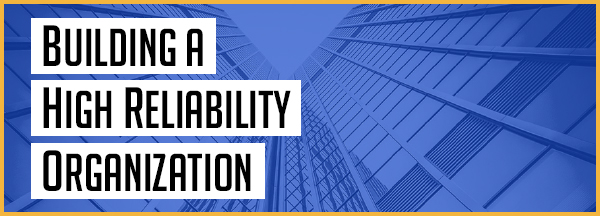
High Reliability Organizations (HROs) are anomalies. They exist in the kind of very complex, fast-evolving environments where you would expect chaos to prevail. But it doesn’t. HROs are able to cope successfully with unexpected conditions. That’s what makes these unusual organizations so attractive to researchers.
What can we learn from them?
Knowledge about HROs is rooted in what we call “heroic” organizations like aircraft carriers and air traffic control systems where a thousand things must go right every moment or someone dies. People like Karl Weick and Kathleen Sutcliffe, two of the most prominent scholars in the field, are beginning to stretch the concepts developed by evaluating HROs to apply to less heroic settings like banking, healthcare and manufacturing.
Weick and Sutcliffe use the phrase “mindful organizing,” which entails “sense-making, continuous organizing, and adaptive managing” to summarize the approach taken by HROs.[1] They identify 5 principles that make up the body of mindful organizing found in successful HROs, and in organizations that aspire to that continuously high reliability.
1. Preoccupation with Failure
Systems in modern organizations are complicated, and they experience failures. HROs focus like a laser on failure; they give “continuous attention to anomalies that could be symptoms of larger problems.” The basic insight here is that big problems don’t emerge fully formed in an instant. They are almost always preceded by smaller problems or anomalies, or evidence that would point to the big problem if it were given proper attention.
What HROs do NOT do is assume that if a control in place succeeds in containing a failure, everything is right. They look deeper into an incident to find underlying causes. They also do not lump a failure with common elements to another into a class that all are alike. Evidence is gathered and evaluated.
2. Reluctance to Simplify
Complexity means that organizations have numerous potential sources of failure, and HROs do not apply generalized terms to describe them. It is a common and convenient response to a problem to name a general kind of cause and consider it a solution, e.g., ‘the bank has a state of the art alarm system’ so the failure of the alarm can be fixed by replacing it. What if the alarm’s failure is caused by something deeper, what specifically was the cause? In HROs, the occurrence of a failure is taken as an opportunity to dig deeply into the details of the system involved to find a real cause-you differentiate the details within those broad, convenient generalizations.
3. Sensitivity to Operations
Operations happen in real time, they include both discrete components and the system they compose. As such, operations generate outcomes that we can observe. The HRO continuously evaluates outcomes to determine if they are in fact serving the objectives of the organization. They do not assume that the continuous outcomes will be the same as planned, assumed, or hoped for.
Operations are what an organization does. In this sense, HROs treat them as hands-on experiences from which lessons about the organization can be taken to further improve function in real time.
4. Commitment to Resiliency
“The signature of the high reliability organization is not that it is error-free, but that errors don’t disable it.” HROs are essentially adaptable, learning organizations. They can experience a failure but continue operating under degraded conditions while marshalling resources to restore capacity.
To operate like this, HROs can recognize emerging anomalies despite prior beliefs, experiences, or plans. In large part, this requires both open-minded observation and a willingness to react appropriately even under unanticipated conditions.
5. Deference to Expertise
The fact that an HRO must be open-minded rather than judgmental leads to the idea that the culture of the HRO defers to expertise. The key point, however, is that the “expert” involved is the person with hands-on knowledge of the operation at the point of a failure, not the “expertise” conferred by hierarchical authority.
In the HRO, the expert has access to upward reporting, and there is no intimidation from authority to impede the communication. The openness required for the HRO to succeed depends on accurate information from every source.
Not every organization will adapt every HRO principle, at least in the short term. Many organizations can improve continuous operational reliability by adapting the pieces that fit. Over time, more and more of the organization can be improved this way, moving toward the “perfect reliability” objective of the HRO.
Learn more about making your organization an HRO in our new whitepaper, Building a High Reliability Organization.
[1] Weick, Karl and Kathleen Sutcliffe. Managing the Unexpected: Sustained Performance in a Complex World, 3rd Edition. Hoboken, NJ: John Wiley & Sons, 2015. p. 7, 21.


